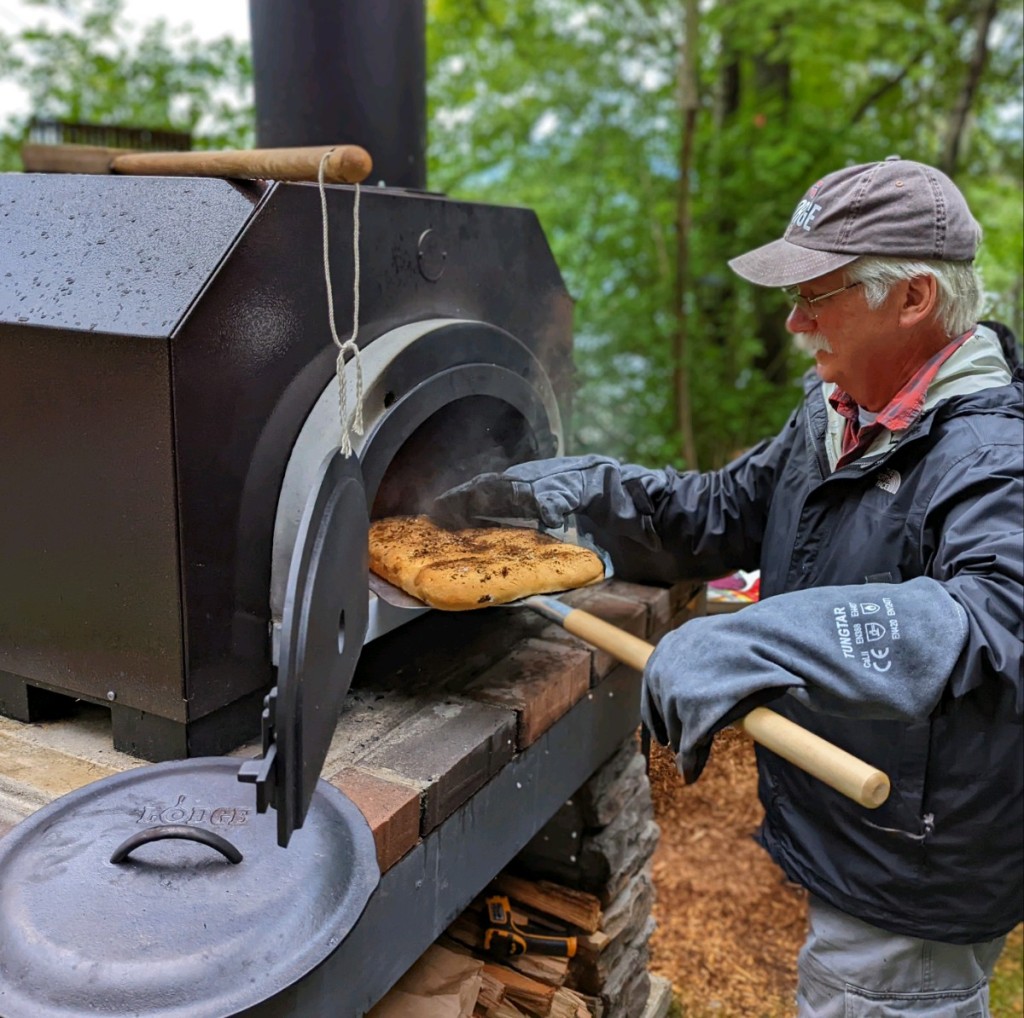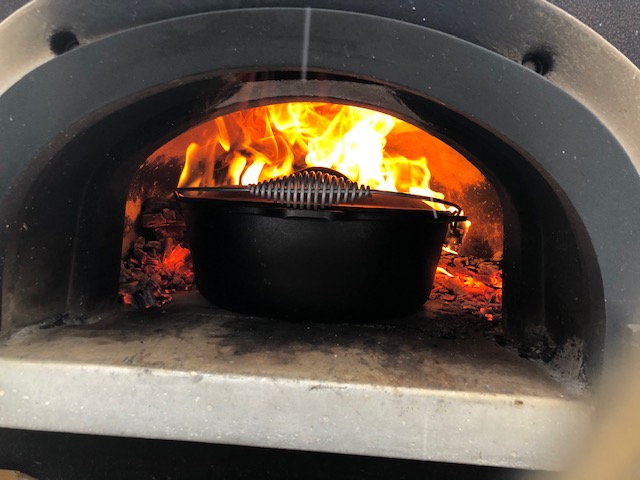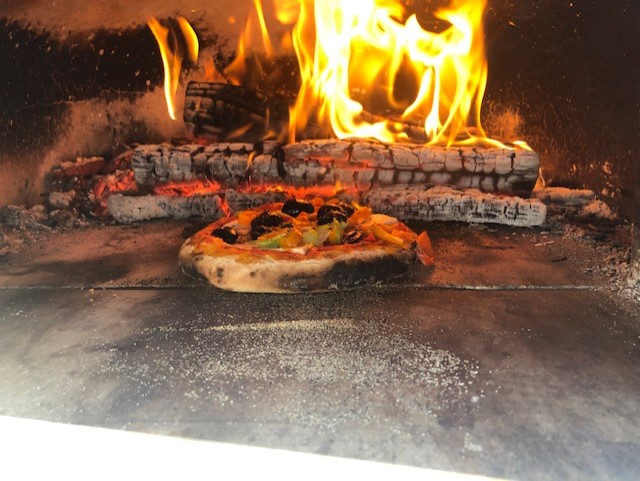
It’s how it all began – furiously rubbing two sticks together or striking flint with an iron rich stone to create a spark. Small clusters of dried brush capture the spark, smolder, and eventually burst into a small flame. Stacking twigs and pieces of bark and dry wood from the forest floor gave birth to a fire that would serve mankind’s first cooks well.
Cooks and chefs have remained fascinated by an open fire ever since those early days a few thousand years ago. There is something intoxicating when we watch, feel, and smell the impact of fire. Those golden, and sometimes red and blue flames lure us into an interesting world of cooking that is less science and more art. The flames are not as easy to control as simply turning on the gas and regulating the mix of gas and oxygen. The flame from a wood fire has a mind of its own – a mind that is impacted by the type of wood, how well it is aged and dried, the size of the wood from kindling to full logs, the amount of oxygen that it has access to, and whether the fire is free to move about or controlled in a domed oven. The colors are beautiful, and the heat is so different than what cooks work with from a more controllable fuel.
You may believe knowing how to cook with gas or electric prepares us to certainly cook with wood fire. Simply stated – you are wrong. When wood is involved, you need to accept that whatever you know may need to be put aside – it’s time to learn all over again.
Wood burns very hot, it is less forgiving than other fuels and tends to hold back a flurry of surprises if you don’t keep your focus on what is happening in the moment. It will take time to become comfortable with the nuances of fire cooking, don’t rush your education, don’t ever assume, and don’t ever walk away from those yellow, white, red, and occasionally blue flames as they dance under your food and eventually nestle into a bed of cherry red coals.
Mastery of fire may never be in the cards for most cooks, at best you become comfortably aware. When do you add more wood, of what size and type, should you allow more oxygen in or cut back, should you stoke the fire or let it be? What is the right temperature for what you are cooking? You point a laser thermometer to the walls of a live fire oven that has turned from carbon black to powdery white when the temperature is right. The thermometer reads 850 degrees and then a few minutes later – 900. Parts of the oven are steady at that temp as long as the fire is active, while a few corners are cooling to 600 or less. Whatever you cook will accept the heat far too quickly and will need to be moved frequently to adapt to oven temperature changes. Some items will not stand temperatures that high so you will need to temper the fire, remove some or all the coals, and trust that the oven will cooperate.

An open flame grill may rage at temperatures in excess of 1,000 degrees which may be perfect for searing steaks and chops but challenging for follow thru cooking to ensure proper degrees of doneness. The cook will need to stay on top of this – moving items to different spots on the chargrill, adding or shifting wood around, raising and lowering the grates to avoid burning – it is a relentless process of attempted control in an uncontrolled environment.
Ah…but the experience is so gratifying. The smell of fat dripping on burning wood, especially if you use fruit woods is intoxicating. The heat is so intense that sweat rolls down your back and collects on your forehead – anxious to flow like streams cascading from a small forest waterfall. You know you are cooking and sense that you are becoming one with the process – you are part of the fire now. This is imperative if some level of control is to be maintained. The caramelization on the exterior of meat is incredible. It leaves a crust so perfect that when the guest finally cuts into the meat it pops as if to feel a sense of relief releasing those juices that lie underneath the wood charred exterior.
Whole fish hit the surface of cast iron skillets that have been pre-heated in the wood-fired oven instantly sealing in the moisture underneath the skin. Roasted potatoes and root vegetables, caramelized cippolini onions, mushrooms and winter squash cook in a few minutes while holding on to that caramelized exterior and smoky undertones from the wood coals that now glow like the walls of the devil’s lair. And let’s not forget pizza. Once you’ve cooked and tasted wood fired pizza there is no turning back. Every other product will pale in comparison to that thin, crispy crust, the smoky flavors, and the bubbling hot cheese. In a 900-degree oven, a pizza bakes in less than two minutes – so beware that every second brings the cook closer to burning their work.

I am reminded of the words from Mick Jaggar:
“Don’t play with me cus you’re playing with fire.”
A warning from the oven or grill that reminds the cook of who is in control.
For the line cook this is a dance that embraces an entire shift. There is no rest as he or she works constantly to stay a few steps ahead of the fire. This is hard work, but work that brings a smile to the cook’s face. At the end of service, when the coals are spread out to cool down faster, and the cook holds a wet towel to his or her face to try and shock away the redness that looks as if it was exposed to hours of intense sun on a Florida beach, the kitchen begins to adjust from what has just occurred. For the past few hours, the kitchen and its cooks have lived on the edge of chaos. They worked frantically trying to stay in control and for the most part they were, but there were moments when that was in doubt. The fire always had the upper hand and now, as it cools, gives a nod of respect for cooks who did their best. There is mutual respect in a wood fired kitchen – respect for the fire and the fires reluctant respect for the cook. They went into battle together and survived to cook another day. What a thrill, what a time they had together – the cook trying to ride the wild horse. Now they are trotting around, totally exhausted, but feeling complete. Tomorrow they will try again wondering who will win the battle?
We have connected with the roots of cooking, with those early inhabitants who first marveled at the power of fire and the benefits of cooking food rather than eating it raw. The flavors and aromas of burning wood and the food it touches were and remain one of life’s great pleasures.
There is nothing like cooking with live fire.
PLAN BETTER – TRAIN HARDER
Harvest America Ventures, LLC
Restaurant Consulting
www.harvestamericacues.com BLOG
CAFÉ Talks Podcast

Leave a comment